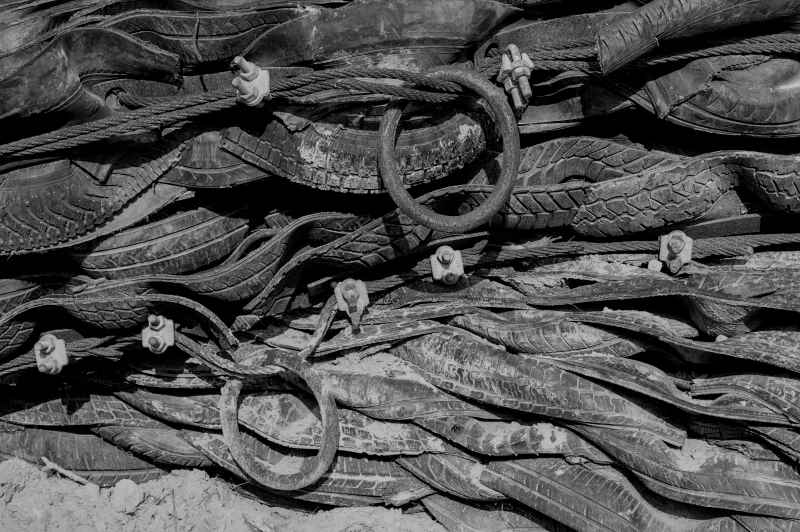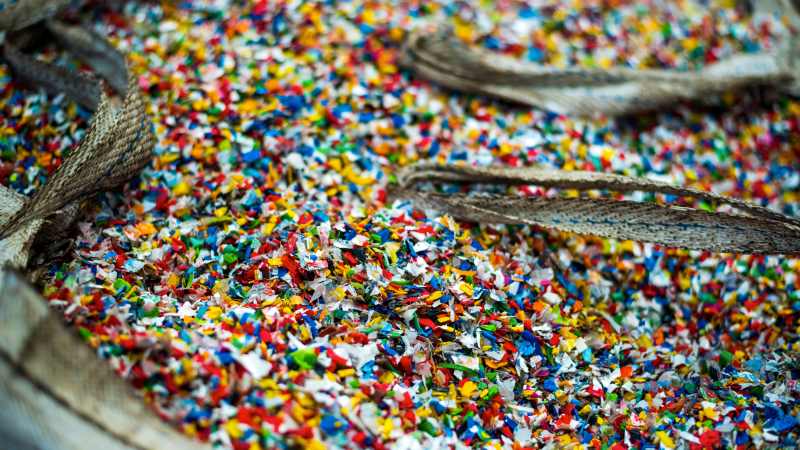Published Dec 9, 2014
Old, discarded tires are a menace to our society and to the environment. There are plenty of small scale, creative ways to use old tires as garden mulch and tire swings, but, realistically speaking, the sheer number of used tires requires a long term, large scale solution.
Recycled tires can enjoy a new life as different products from a number of different industries. Tire shred can be compared to rocks that start out as boulders that break off into landscaping rocks, then river rock, golf ball sized rocks, gravel, pea gravel, and ultimately, sand. Recycled tires share a similar path when they are shredded down to progressively smaller products: Large shreds, chips, crumbles, and powders.
There are mainly four types of shredders:
Two Shaft Shredders (Primary Shredder) produce shreds of approximately 2”- 6” in length.
Large shreds can be used as Tire Derived Fuels (TDF), which is not technically considered recycling because, instead of being made into something else, it’s burned in specially made kilns in order to produce energy. Tire shreds produce the same energy as oil and burns cleaner than coal. And TDF produces about 25% more energy than coal.
Large tire shreds can serve multiple purposes in landfill projects. From the bottom up, tire shreds can be used as a protective cover of the landfill liner. You may find them in the drainage layer within the landfill’s liner, in its final cover system, and also used in the gas vents. Lastly, they are used in the leachate collection system that keeps all the nasty stuff that comes from landfills out of our water supplies.
Civil engineering applications utilize large shred as backfill, shoulder reinforcement, drainage systems, and reinforcing slopes. Tire shreds are more porous than gravel so they hold more water and they compact better when compressed. Because they are lighter than traditional materials, they cost less to transport.
Graters (Secondary Shredder) produce 1”-2” chips
Large tire shreds can then be sent to a secondary shredder to produce “chips”. Recycled tire chips are used primarily in projects that need to create a softer landing for the people, or the animals, using them. Typically they are used in sporting arenas, race tracks and playgrounds. Rubber chips are thought to reduce injuries because of the greater traction they provide. The chips are practically impervious to weather, so they last forever, making them cost effective.
The chips can also be used as a long-lasting landscaping mulch, as a substitute for any gravel application, and can be burned as TDF. When ground to uniform size they are effectively used in drainage fields for septic systems.
Crumblers produce .20”-¼” crumbs
Tire crumbs are mostly free of wire or other contaminants. They can also be used in sports arenas and playgrounds but are primarily used as an ingredient in other products, such as rubber mats, roofing materials, watertight coatings, rubberized asphalt and even new tires. Rubber crumbs can be molded or extruded into various products without the need of other ingredients or can be altered to fit a specific recipe.
Super Crumbler produces 60-120 mil powders
These fine powders are free of wire and contaminants and because of its very small size is useful for products that need a smooth and blemish free appearance.
Recycled tires can enjoy a new life as different products from a number of different industries. Tire shred can be compared to rocks that start out as boulders that break off into landscaping rocks, then river rock, golf ball sized rocks, gravel, pea gravel, and ultimately, sand. Recycled tires share a similar path when they are shredded down to progressively smaller products: Large shreds, chips, crumbles, and powders.
There are mainly four types of shredders:
Two Shaft Shredders (Primary Shredder) produce shreds of approximately 2”- 6” in length.
Large shreds can be used as Tire Derived Fuels(TDF), which is not technically considered recycling because, instead of being made into something else, it’s burned in specially made kilns in order to produce energy. Tire shreds produce the same energy as oil and burns cleaner than coal. And TDF produces about 25% more energy than coal.
Large tire shreds can serve multiple purposes in landfill projects. From the bottom up, tire shreds can be used as a protective cover of the landfill liner. You may find them in the drainage layer within the landfill’s liner, in its final cover system, and also used in the gas vents. Lastly, they are used in the leachate collection system that keeps all the nasty stuff that comes from landfills out of our water supplies.
Civil engineering applications utilize large shred as backfill, shoulder reinforcement, drainage systems, and reinforcing slopes. Tire shreds are more porous than gravel so they hold more water and they compact better when compressed. Because they are lighter than traditional materials, they cost less to transport.




